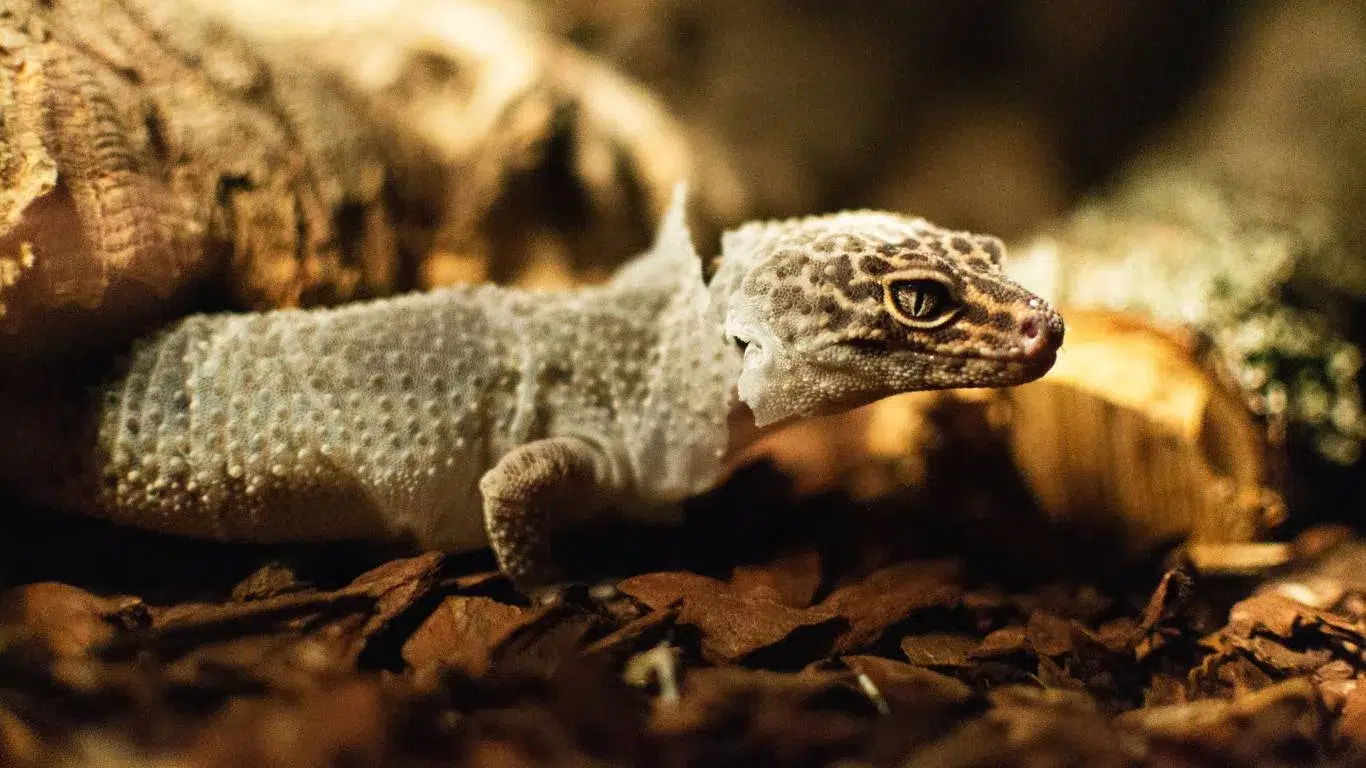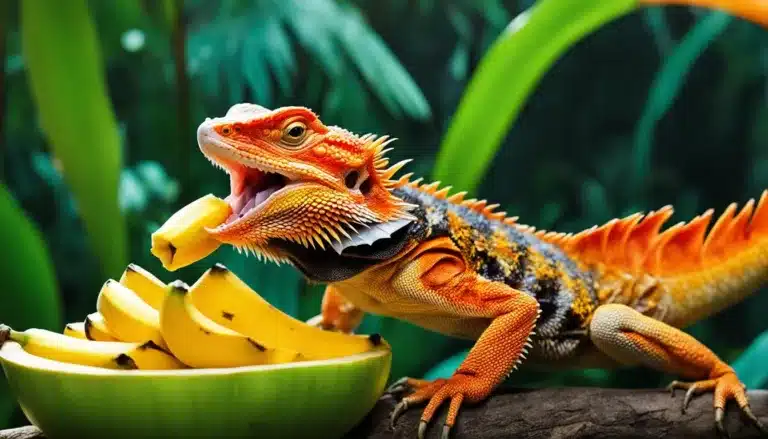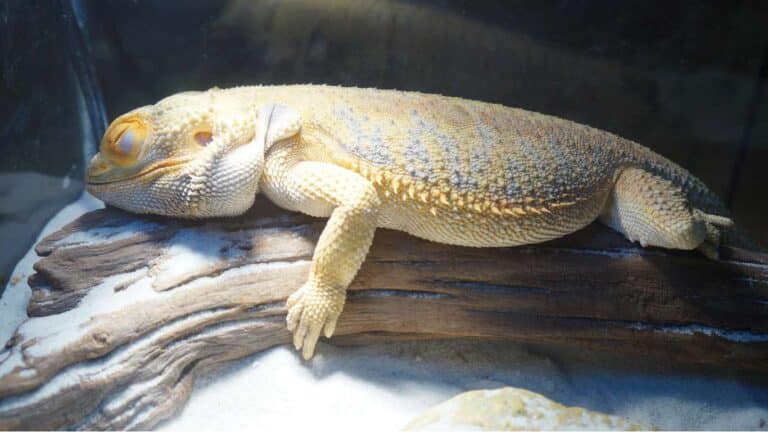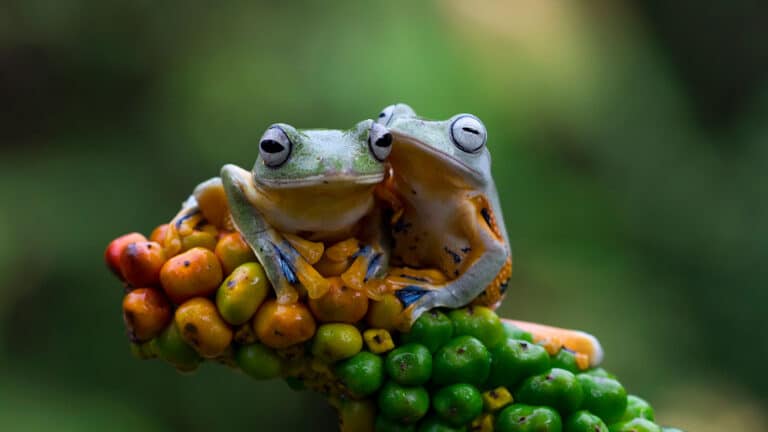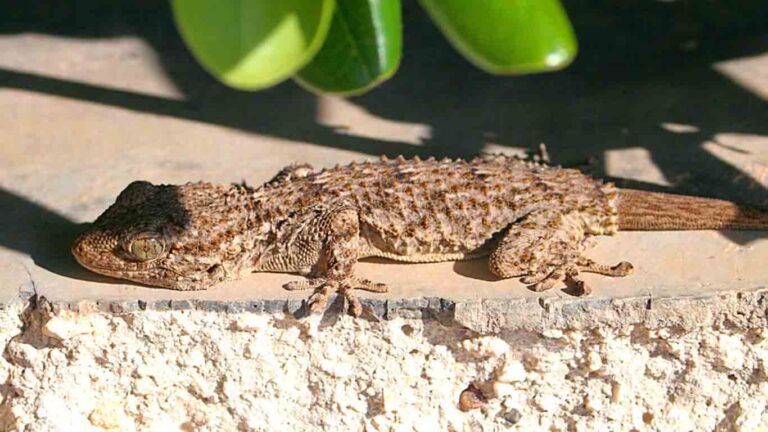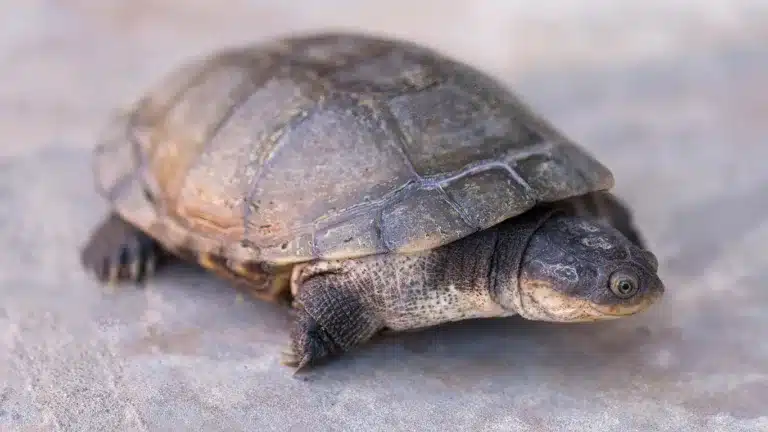Did you understand that leopard geckos shed their skin each 4 to 6 weeks as a part of their herbal increase process? That’s right! “How Often Do Leopard Geckos Shed” These charming reptiles undergo losing to accommodate their growing length and to renew their pores and skin. But what elements influence their shedding frequency? How are you able to make certain a clean dropping process to your leopard gecko?
Let’s explore the secrets and techniques to preserving a wholesome losing ordinary for your scaly friend. “How Often Do Leopard Geckos Shed” Understanding the shedding frequency is essential for the overall health and well-being of your leopard gecko.
How Often Do Leopard Geckos Shed?
Understanding the Shedding Process of Leopard Geckos
Leopard geckos undergo a fascinating shedding process known as ecdysis, where they shed their entire outer layer of skin, including the scales. This natural process is essential for their growth and renewal. To gain a deeper understanding of this shedding cycle, let’s explore the different stages involved:
Pre-Shedding Phase
Before shedding, leopard geckos may exhibit specific behaviors which indicate that the shedding process is imminent. These behaviors include increased hiding, loss of appetite, and rubbing against objects to help loosen the old skin. During this phase, the gecko’s skin may appear dull and opaque.
Shedding Phase
Once the pre-shedding phase concludes, the actual shedding phase begins. At this point, the gecko will start to peel off the old skin. This process usually takes a few hours to a day to complete. It’s essential to remember not to disturb or assist the gecko in removing its old skin, as interference can lead to incomplete shedding or injury.
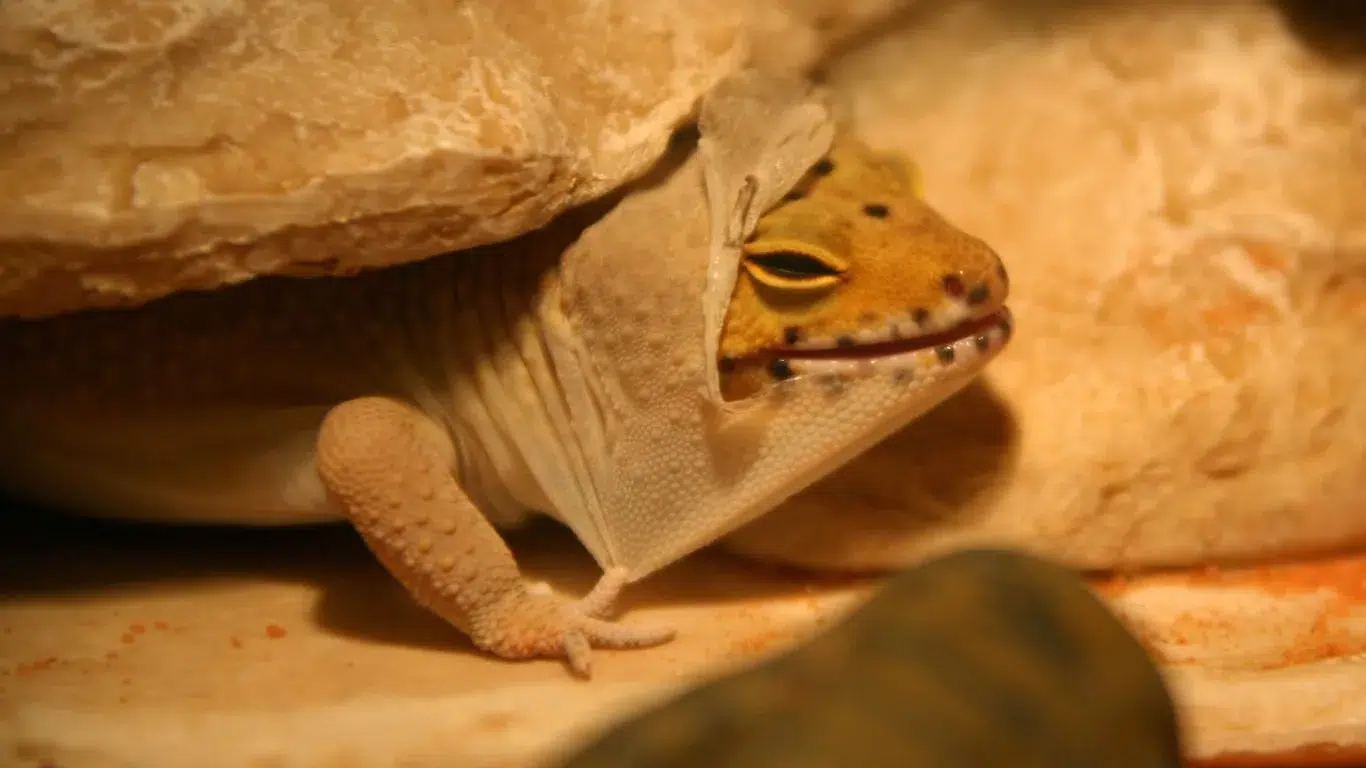
Post-Shedding Phase
After shedding, the gecko’s new skin will be vibrant and shiny. At this stage, the gecko will display renewed energy and alertness. The successful shedding process enables the gecko to maintain healthy skin and promotes overall well-being.
Understanding the shedding process of leopard geckos is crucial for their care and well-being. By observing the distinct phases and ensuring a conducive environment, you can support your gecko through this natural and transformative process.
Factors Affecting Leopard Gecko Shedding
Several factors can influence the shedding frequency and patterns of leopard geckos. These include age, temperature, humidity, diet, and overall health.
Leopard geckos of different ages have varying shedding habits. Younger geckos, in their rapid growth phase, tend to shed more frequently than older ones.
The environmental conditions, specifically temperature and humidity, play a crucial role in the shedding process. The gecko’s ability to properly loosen and remove its old skin is directly affected by these factors. Inadequate humidity levels can result in stuck shed or retained skin, which can lead to health problems if not addressed.
Nutrition also plays a significant role in leopard gecko shedding habits. A well-balanced diet, rich in essential nutrients such as calcium and vitamin D3, is crucial for healthy shedding. Providing the necessary nutrients supports the gecko’s overall skin health and contributes to a successful shedding process.

The gecko’s overall health and well-being can impact its shedding patterns. A stressed or ill gecko may experience irregular shedding or difficulties in shedding properly. Therefore, it is essential to provide optimal care and create an environment that promotes the gecko’s health.
“Proper humidity levels, a balanced diet, and overall well-being are key to maintaining regular and successful shedding in leopard geckos.”
– Anna Wong, Volunteer
Factors affecting leopard gecko shedding:
| Factors | Affects |
|---|---|
| Age | Younger geckos shed more frequently |
| Temperature | Optimal temperature promotes proper shedding |
| Humidity | Adequate humidity helps in the shedding process |
| Diet | Proper nutrition supports healthy shedding |
| Overall Health | Gecko’s well-being affects shedding patterns |
By understanding and addressing these factors, you can ensure regular shedding and promote the overall health and well-being of your leopard gecko.
Tips for Helping Leopard Geckos with Shedding
To ensure that your leopard gecko goes through a healthy shedding process, it is crucial to create an optimal environment. Here are some tips to help your gecko shed successfully:
- Maintain the right temperature: Keep the temperature in the enclosure within the range of 88-92°F during the day and 70-75°F at night. This temperature range will stimulate your gecko’s natural shedding process.
- Provide a humid hide: Create a humid hide within the enclosure by placing a damp moss or paper towel in a hide box. This will help increase humidity levels and provide a moist environment for your gecko during shedding.
- Avoid handling or disturbing the gecko: It is best to refrain from handling or disturbing your gecko during the shedding process. Handling can cause stress and interfere with the shedding, potentially leading to incomplete shedding or skin damage.
- Consult a reptile veterinarian: If you notice any problems with shedding, such as retained shed or stuck shed, it is important to seek guidance from a reptile veterinarian. They can provide you with proper guidance and assistance to resolve any shedding issues.
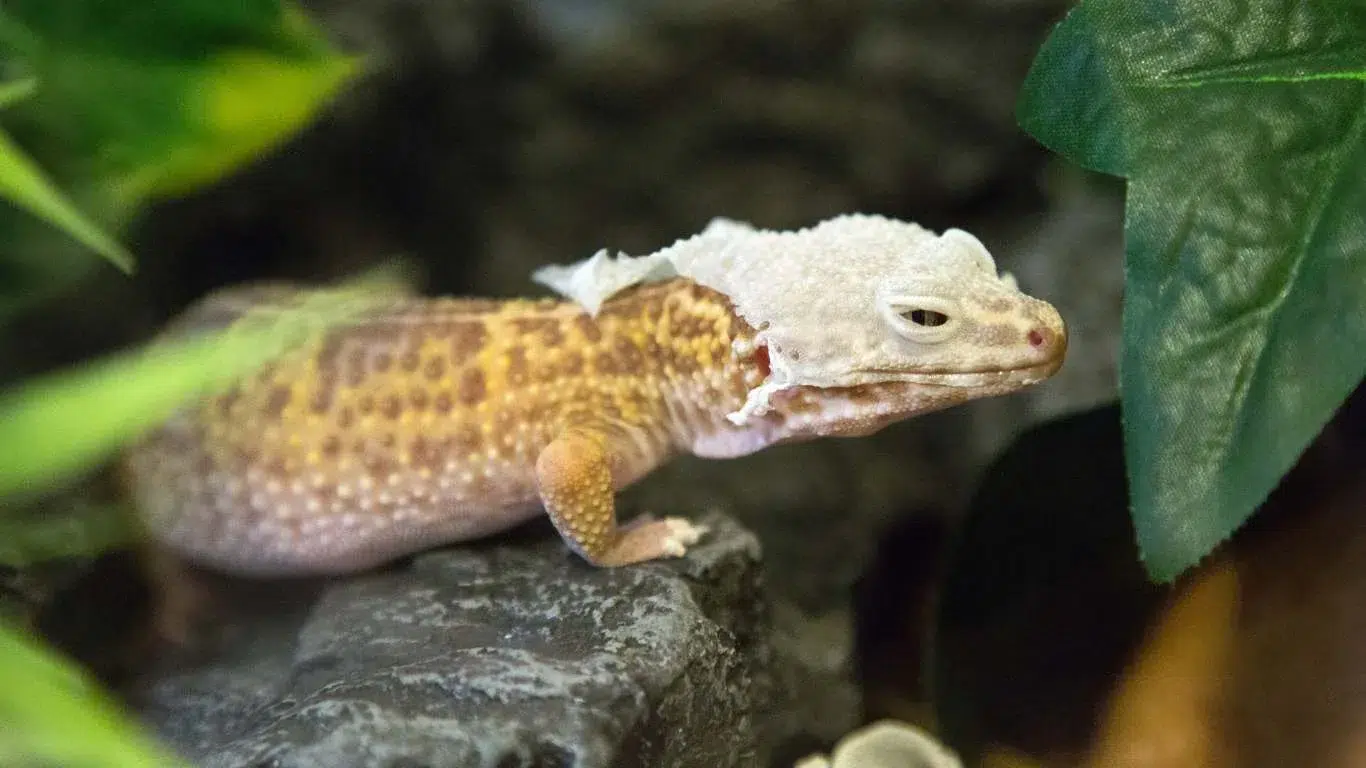
By following these tips, you can help create a favorable environment for your leopard gecko’s shedding process, ensuring that it sheds properly and maintains optimal skin health.
Common Shedding Issues and Solutions
| Shedding Issue | Solution |
|---|---|
| Retained Shed | Provide a humid hide and increase humidity levels to help loosen the old skin. You can also consult a reptile veterinarian for assistance. |
| Stuck Shed | Gently moisten the affected area with warm water and carefully remove the stuck shed with a damp cloth or cotton swab. Be cautious not to injure your gecko. |
| Incomplete Shedding | Ensure optimal environmental conditions, including proper temperature and humidity levels. If issues persist, consult a reptile veterinarian for further evaluation. |
The Importance of Proper Nutrition for Healthy Shedding
Proper nutrition plays a crucial role in promoting healthy shedding in leopard geckos. A well-balanced diet consisting of gut-loaded insects, such as crickets, mealworms, and roaches, is essential for providing the necessary nutrients for skin health and shedding. Additionally, dusting the insects with a calcium and vitamin D3 supplement can help ensure that the gecko receives adequate levels of these essential nutrients. It is important to avoid overfeeding or feeding fatty insects, as this can lead to obesity and potential health issues that may impact shedding. Maintaining a healthy weight and providing the proper nutrients will contribute to an optimal shedding process.
Nutritional Guidelines for Leopard Geckos:
When feeding your leopard gecko, keep the following guidelines in mind:
- Offer a variety of gut-loaded insects to ensure a diverse nutritional intake.
- Dust the insects with a calcium and vitamin D3 supplement before feeding to provide essential nutrients.
- Avoid overfeeding to prevent obesity and related health issues.
- Monitor your gecko’s body condition and adjust feeding amounts accordingly.
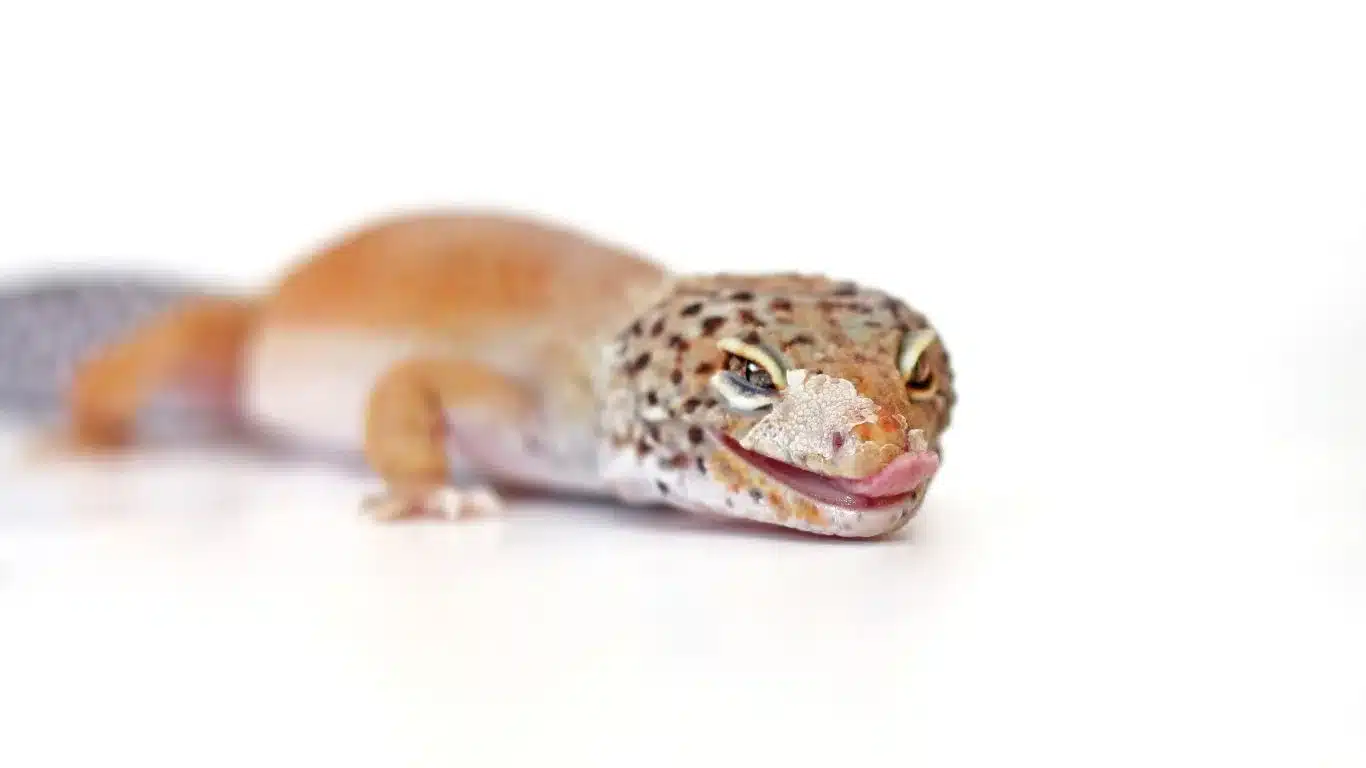
Sample Feeding Schedule:
| Day | Feeding |
|---|---|
| Monday | 4-5 crickets |
| Tuesday | 5-6 mealworms |
| Wednesday | 4-5 crickets |
| Thursday | 5-6 mealworms |
| Friday | 4-5 crickets |
| Saturday | 5-6 mealworms |
| Sunday | Rest day (no insects) |
This is just an example feeding schedule. Adjust the quantities based on your gecko’s size, age, and activity level. Remember to always provide fresh water for your leopard gecko, and monitor their overall health and appetite to ensure they are receiving proper nutrition.
Common Shedding Problems in Leopard Geckos
While shedding is a natural process for leopard geckos, it’s important to be aware of common issues that can arise during this time. Understanding these problems and knowing how to address them will help ensure a successful shed for your gecko.
- Retained Shed: One common issue is when a gecko is unable to shed its entire layer of old skin. This is often caused by inadequate humidity levels, which can lead to constricted blood flow and potential health issues.
- Stuck Shed: Another problem is when pieces of old skin remain adhered to the gecko’s body after shedding. This can restrict movement and cause discomfort, so it’s important to address it promptly.
- Incomplete Shedding: In some cases, a gecko may be unable to fully remove its old skin. This can be due to poor health or improper environmental conditions. Regular monitoring of the shedding process can help prevent incomplete shedding.
It’s crucial to observe your gecko during the shedding process and take action if any of these problems occur. Promptly addressing these issues will help ensure a healthy shed for your leopard gecko and prevent any potential complications.
Note: The image above illustrates common shedding problems encountered by leopard geckos.
The Role of Humidity in Leopard Gecko Shedding
Proper humidity levels are crucial for successful shedding in leopard geckos. While these reptiles naturally inhabit arid and desert regions with low humidity, providing higher humidity levels during the shedding process can facilitate skin loosening and shedding. Aim for a humidity level of around 40-50% during shedding periods by misting or providing a moist hide within the gecko’s enclosure. This moisture helps create an environment that allows the gecko’s old skin to soften and separate from its body.
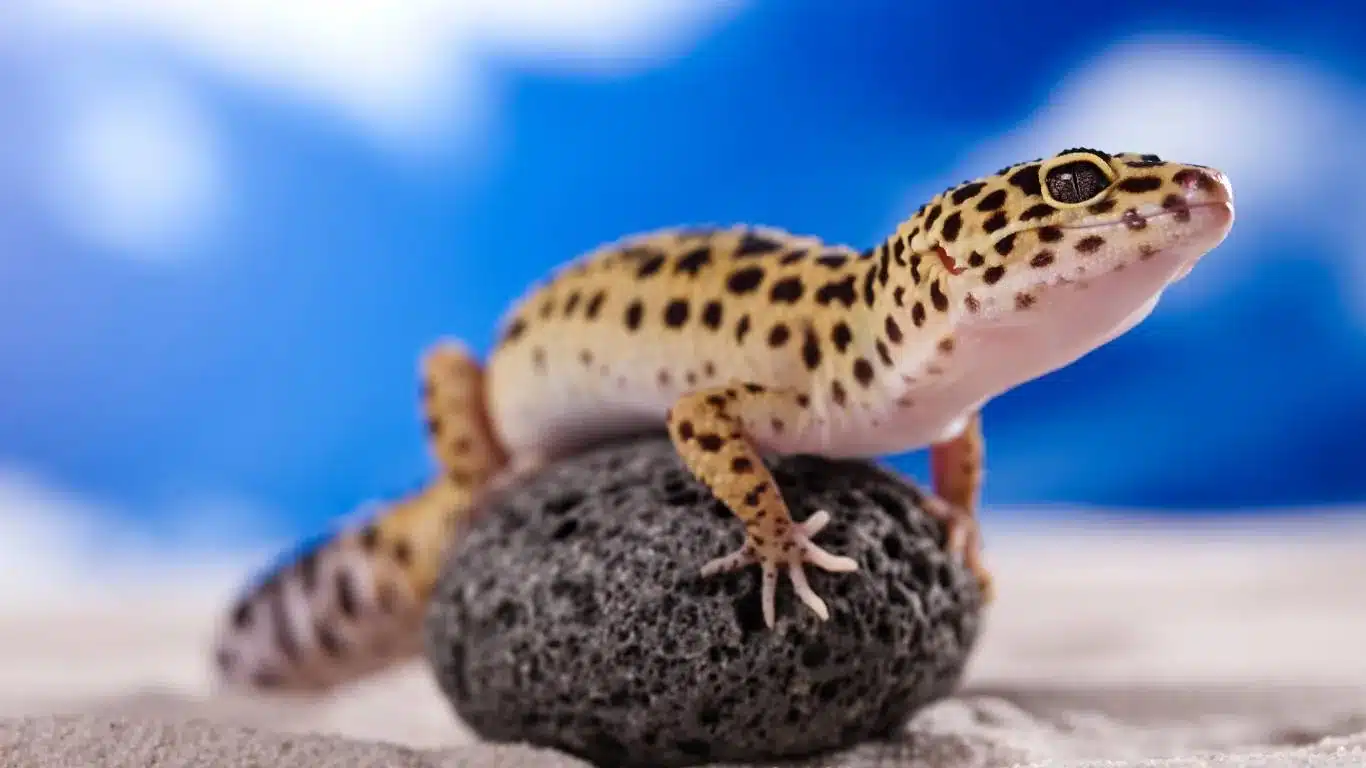
It is important to note that excessive humidity should be avoided, as it can lead to respiratory problems for leopard geckos. Regularly monitor the humidity levels in the gecko’s habitat, and adjust accordingly to maintain optimal conditions for shedding. By creating a suitable humidity range, you can ensure a smooth and successful shedding process for your leopard gecko.
Tip: To maintain proper humidity levels, you can use a hygrometer to measure the humidity in the gecko’s enclosure. Additionally, providing a moist hide, such as a hide box with damp moss or a moistened paper towel, can help increase humidity and provide a specific area for the gecko to retreat while shedding.
r
Summary of Humidity Requirements for Leopard Gecko Shedding:
| Humidity Level | Description |
|---|---|
| 40-50% | Ideal humidity range for shedding |
| Below 30% | Too low, may lead to difficulties in shedding |
| Above 60% | Too high, may cause respiratory problems |
Adequate humidity plays a vital role in ensuring a successful shedding process for leopard geckos. By maintaining the right humidity levels, you can help your gecko shed its old skin with ease and promote healthy skin health and overall well-being.
Recognizing Signs of a Healthy Shedding Process
A healthy shedding process in a leopard gecko can be recognized by several signs. The gecko’s skin will appear dull and opaque before shedding, and the eyes may appear cloudy or bluish. As the shedding process progresses, the gecko will begin to peel off the old skin, starting from the head and moving towards the tail. The shed skin should come off in one complete piece, indicating a successful shed. The new skin will be vibrant and shiny, and the gecko will appear more active and alert. Regular monitoring of the shedding process and observing these signs will help ensure that your gecko is shedding properly and maintaining good skin health.
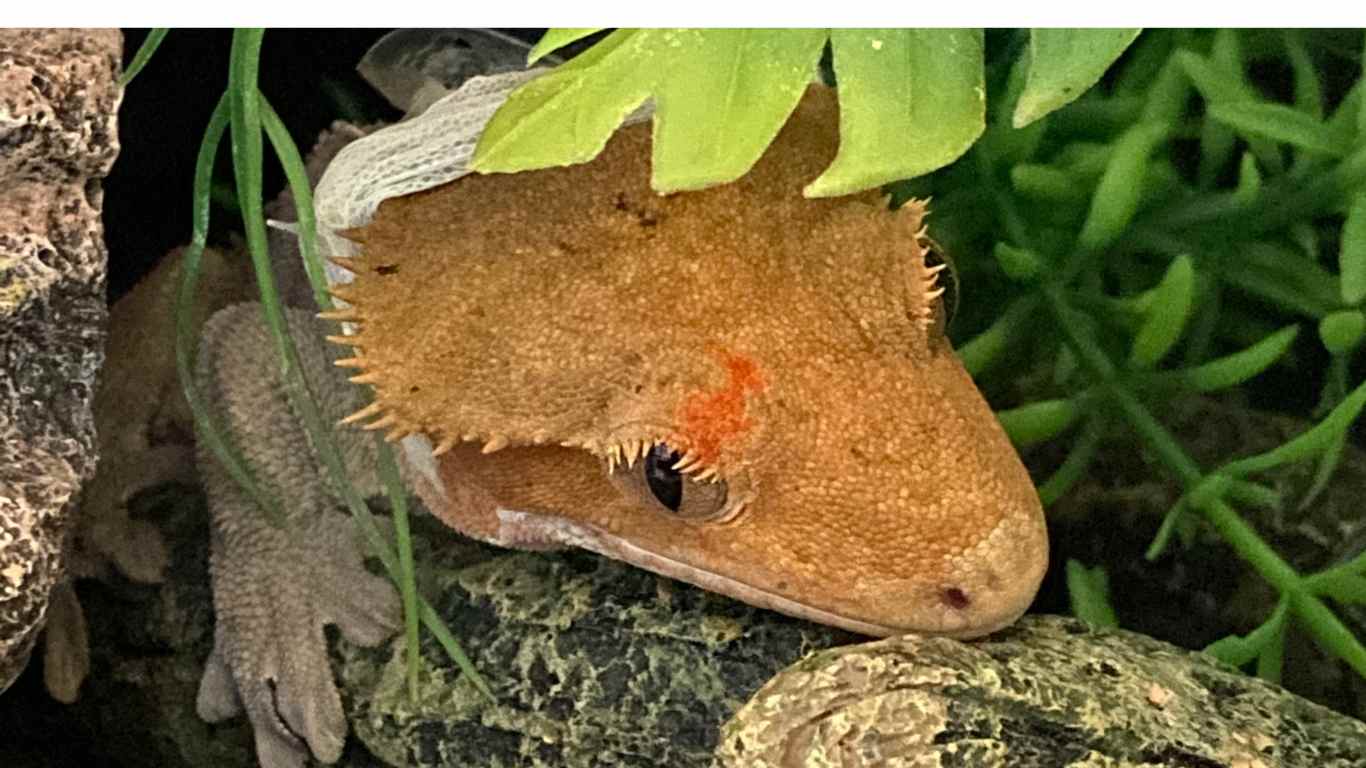
If your leopard gecko exhibits these signs during shedding, it is an indication that the process is proceeding as it should. The dull and opaque appearance of the skin is a result of the new skin forming beneath the old layer. The cloudy or bluish eyes, known as “eye caps,” occur because the gecko’s eye scales are also shed during the process. As the gecko peels off the old skin, it is crucial to allow it to do so independently, without any interference or assistance. The shed skin should come off in a single piece, demonstrating that the gecko has shed its entire outer layer successfully.
A vibrant and shiny new skin is an affirmative sign that the shedding process has been completed effectively. The gecko’s new skin is rejuvenated and reflects light, giving it a healthy and lustrous appearance. At this stage, the gecko will be more active and alert, exhibiting its natural behavior. It is important to note that each gecko may have slightly different shedding habits and patterns, but the overall signs of a healthy shedding process remain consistent.
Regular monitoring of the shedding process is essential to ensure the well-being of your leopard gecko. By paying attention to these signs, you can identify any abnormalities or issues that may arise during shedding. If you notice any difficulties or incomplete shedding, it is recommended to consult a reptile veterinarian for guidance and intervention. Prompt attention and appropriate care will help prevent any complications and promote a successful shedding process for your leopard gecko.
Maintaining a Consistent Shedding Schedule
Establishing a consistent shedding schedule for your leopard gecko is essential for their overall health and well-being. By providing the right environment and care, you can regulate their shedding frequency and ensure successful shedding.
The key factors to consider when maintaining a shedding schedule are temperature, humidity, and diet. These elements play a crucial role in the shedding process of leopard geckos. Maintaining optimal conditions will encourage regular shedding and minimize the risk of complications such as retained shed or incomplete shedding.
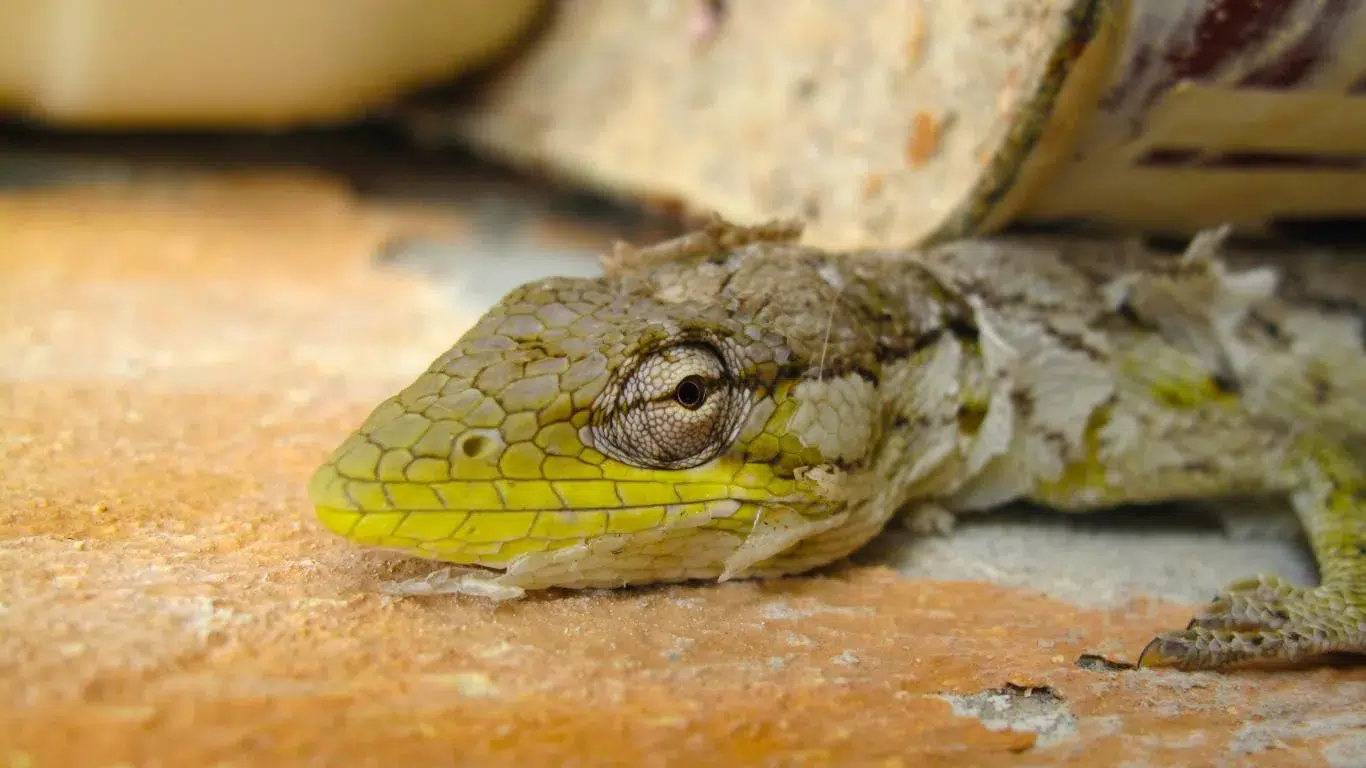
Temperature
Leopard geckos require appropriate temperature levels to support their shedding cycle. Ensure that your gecko’s enclosure is equipped with a heat source that maintains a temperature of around 88-92°F during the day and 70-75°F at night. These temperature ranges promote the gecko’s natural shedding process and help regulate their shedding schedule.
Humidity
Humidity levels also play a vital role in leopard gecko shedding habits. While leopard geckos are native to arid regions, providing moderate humidity during shedding periods is crucial. Aim for humidity levels around 40-50% by misting the enclosure or providing a moist hide. This humid environment assists in loosening the old skin and facilitates a smooth shedding process.
Diet
A balanced diet is fundamental in maintaining a healthy shedding schedule for your leopard gecko. Feed them a variety of gut-loaded insects such as crickets, mealworms, and roaches to ensure they acquire the necessary nutrients for shedding. Calcium and vitamin D3 supplementation will further support their skin health and shedding process. Avoid overfeeding or offering fatty insects, as these can lead to obesity and interfere with shedding.
Regularly inspecting the enclosure for signs of shedding, such as old skin, is vital for tracking your gecko’s shedding patterns. This observation will help you adjust care as needed to maintain a consistent shedding schedule. Remember, each gecko may have variations in their shedding timeline, so monitoring their individual needs is essential.
| Factors | Importance |
|---|---|
| Temperature | Regulates the shedding cycle |
| Humidity | Aids in skin loosening and shedding |
| Diet | Provides essential nutrients for shedding |
With consistent attention to temperature, humidity, and diet, you can help your leopard gecko maintain a healthy and regular shedding routine. By providing the optimal conditions for shedding, you ensure that your gecko’s skin stays in excellent condition and contribute to their overall well-being.
Join the Pet Planet Diaries
Sign up for our newsletter to get the latest tips, stories, and exclusive insights into the wonderful world of pets.
Final Remarks
Shedding is a natural and essential process for leopard geckos that allows for growth and renewal. By understanding their shedding patterns and providing a suitable environment, diet, and care, you can help ensure that your leopard gecko sheds regularly and maintains optimal skin health.
Regular monitoring of your gecko’s shedding habits is crucial, including observing behavior and signs like dull and opaque skin, to ensure timely interventions for issues like stuck shed or retained skin.
Remember, a consistent shedding schedule is important for the overall well-being of your leopard gecko. By creating an optimal environment with appropriate temperature and humidity levels, as well as providing a balanced diet, you can help regulate their shedding frequency and ensure they shed regularly and effectively.
If you have any concerns or questions about your leopard gecko’s shedding routine, it is always advisable to consult a reptile veterinarian. Seeking professional guidance will help you provide the best care for your gecko and maintain their skin health.
FAQ
How often do leopard geckos shed?
Leopard geckos shed their skin periodically as part of their natural growth process. On average, they shed every 4 to 6 weeks. However, younger geckos may shed more frequently, while older geckos may shed less often.
What is the shedding process of leopard geckos?
The shedding process, known as ecdysis, involves the gecko shedding its entire outer layer of skin, including the scales. This process is completed in several stages, including a pre-shedding phase and the actual shedding phase.
What factors affect leopard gecko shedding?
Several factors can influence shedding frequency and patterns, including age, temperature, humidity, diet, and overall health. Younger geckos tend to shed more frequently, and optimal temperature and humidity levels are important for successful shedding.
How can I help my leopard gecko with shedding?
To assist your gecko with shedding, you should provide an optimal environment with appropriate temperature and humidity levels. Creating a humid hide and avoiding handling the gecko during shedding are also important.
What role does nutrition play in leopard gecko shedding?
Proper nutrition is crucial for healthy shedding. Providing a well-balanced diet of gut-loaded insects and supplementing with calcium and vitamin D3 will contribute to optimal shedding.
What are common shedding problems in leopard geckos?
Common shedding problems include retained shed, stuck shed, and incomplete shedding. These issues can be prevented by monitoring the shedding process and addressing any problems promptly.
How important is humidity in leopard gecko shedding?
Proper humidity levels are crucial for successful shedding. Aim for a humidity level of around 40-50% during shedding periods, but avoid excessive humidity.
What are the signs of a healthy shedding process in leopard geckos?
A healthy shedding process can be recognized by dull and opaque skin before shedding, followed by the gecko peeling off the old skin. The shed skin should come off in one complete piece, and the new skin will be vibrant and shiny.
How can I maintain a consistent shedding schedule for my leopard gecko?
By providing a suitable environment with proper temperature and humidity levels, as well as a balanced diet, you can help regulate your gecko’s shedding frequency. Regularly monitoring the shedding process will also help you adjust care accordingly.
Is shedding important for leopard geckos?
Yes, shedding is a natural and essential process for leopard geckos. It allows for growth and renewal of their skin and scales.
Can I assist my leopard gecko in removing its old skin?
It is important not to disturb or assist the gecko in removing its old skin, as this can lead to incomplete shedding or injury. Allow the gecko to shed naturally.

